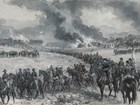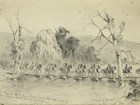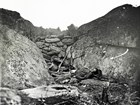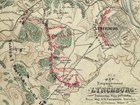The U.S. Army's dramatic burning of the countryside in the autumn of 1864, brought Valley residents the harshest realities of war.
-
Cedar Creek & Belle Grove National Historical Park
Article 1: War Comes to the Valley

The Shenandoah Valley became a major theater of the Civil War from 1861 to 1865, witnessing hundreds of skirmishes and engagements, including twenty battles. Read more
-
Cedar Creek & Belle Grove National Historical Park
Article 2: Jackson's 1862 Campaign in the Shenandoah Valley

In spring of 1862, Confederate Gen. Thomas “Stonewall” Jackson unleashed a vigorous offensive that diverted thousands of Federal troops from their massive advance against the Confederate capital at Richmond. Read more
-
Article 3: Gettysburg Campaign

The Shenandoah Valley was a natural "avenue of advance" for Gen. Robert E. Lee's 1863 invasion of the Northern states, and the Battle of Gettysburg. Read more
-
Cedar Creek & Belle Grove National Historical Park
Article 4: Lynchburg Campaign

In 1863, Ulysses S. Grant, the new general-in-chief of the US Army, ordered his commanders to destroy the Confederacy's armies, transportation networks, and its economic and agricultural base in the Shenandoah Valley and West Virginia. Read more
-
Cedar Creek & Belle Grove National Historical Park
Article 5: Sheridan's Valley Campaign

Gen. Philip Sheridan delivered a series of stinging defeats to the Confederates and wresting their control of the vital region. Sheridan’s army left much of the Shenandoah Valley in ashes, making it unable to sustain Confederate armies. Read more
